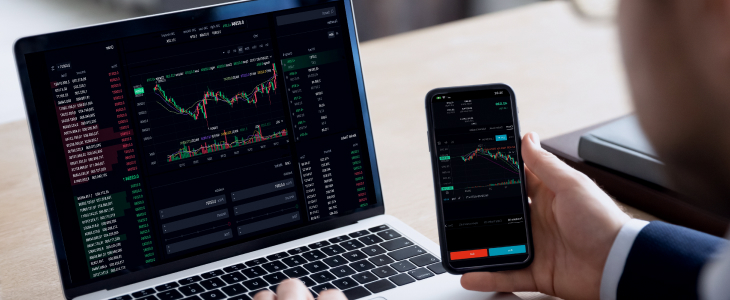
When embarking on a journey in the exciting world of forex trading, selecting a suitable platform for forex trading Trading Platform CM is critical. The platform you choose can significantly impact your overall trading experience, strategies, and success. Whether you’re a seasoned trader or just starting, understanding the various aspects of forex trading platforms can help you make informed decisions and enhance your trading performance.
What is a Forex Trading Platform?
A forex trading platform is a software application that allows traders to buy and sell currencies. These platforms provide a digital interface for accessing the forex market, where traders can execute their trades and manage their accounts. Forex trading platforms come in various forms, including desktop applications, mobile apps, and web-based platforms.
Key Features to Look for in a Forex Trading Platform
When choosing a forex trading platform, several key features are worth considering to ensure that it meets your trading needs:
1. User-Friendly Interface
The usability of a trading platform should be one of your top considerations. A user-friendly interface enables traders to navigate easily through different features, execute trades quickly, and access critical information without confusion. Look for platforms with customizable layouts that allow you to arrange tools and charts according to your preferences.
2. Advanced Charting Tools
Charting tools are essential for analyzing market trends and making informed trading decisions. A good forex trading platform should offer advanced charting features, including various technical indicators, drawing tools, and multiple time frames. These tools help traders perform technical analysis and identify entry and exit points effectively.

3. Automated Trading Capabilities
Automated trading, often referred to as algorithmic trading, allows traders to set predefined criteria for entering and exiting trades. Many modern forex platforms support automated trading through Expert Advisors (EAs) or scripts, which can save time and reduce emotional trading decisions. Look for platforms that provide easy access to these automated features.
4. Security and Regulation
Security is a top priority when dealing with financial transactions. Ensure that the platform you choose is regulated by appropriate authorities and employs robust security measures, such as encryption protocols and two-factor authentication (2FA). A secure trading environment helps protect your funds and personal information from potential threats.
5. Customer Support
Having access to reliable customer support is essential when trading in the forex market. A good trading platform should offer multiple channels for assistance, including live chat, email, and phone support. Additionally, a comprehensive FAQ section and educational resources can also be valuable when you encounter issues or have trading inquiries.
6. Range of Available Currency Pairs
Different trading platforms offer varying numbers of currency pairs. Depending on your trading strategy, you may want to choose a platform that provides access to a wide range of currency pairs, including major, minor, and exotic pairs. This diversification can help you capitalize on various market opportunities and reduce risk.
Types of Forex Trading Platforms
Forex trading platforms can be broadly classified into three types: desktop platforms, web-based platforms, and mobile applications. Understanding the differences among these types can help you choose the platform that best fits your lifestyle and trading preferences.

1. Desktop Platforms
Desktop platforms are installed directly on a computer and offer robust functionality, customization options, and advanced features. They are ideal for traders who prefer to conduct in-depth analysis and manage their accounts from a stationary setup. However, they require a stable internet connection and may not be suitable for on-the-go trading.
2. Web-Based Platforms
Web-based platforms allow traders to access their accounts through a web browser without the need for installation. They offer convenience and flexibility, making them suitable for traders who travel frequently or prefer trading from multiple devices. While they may not support all the advanced features found in desktop platforms, many web-based platforms have improved significantly in recent years.
3. Mobile Applications
Mobile trading apps enable traders to access their accounts and execute trades using their smartphones or tablets. These apps are essential for those who want to trade while on the move or those who prefer a more streamlined trading experience. It’s crucial to choose a mobile app that is user-friendly and delivers the essential features you need for effective trading.
The Importance of a Demo Account
Before committing to a particular forex trading platform, it is highly recommended to practice trading using a demo account. A demo account allows you to trade with virtual funds, enabling you to familiarize yourself with the platform’s features and functions without risking real money. Most reputable forex platforms offer demo accounts, allowing you to test your strategies and improve your skills before venturing into the live market.
Conclusion
In conclusion, selecting the right platform for forex trading is a critical step in your trading journey. By considering the features discussed in this article—such as user-friendly interfaces, advanced charting tools, automated trading capabilities, security measures, customer support, and the range of currency pairs—you can find a platform that suits your trading style and objectives. Don’t forget the value of a demo account to practice and refine your trading skills before diving into the live market. With the right platform and a solid trading strategy, you’ll be better equipped to navigate the dynamic world of forex trading successfully.

